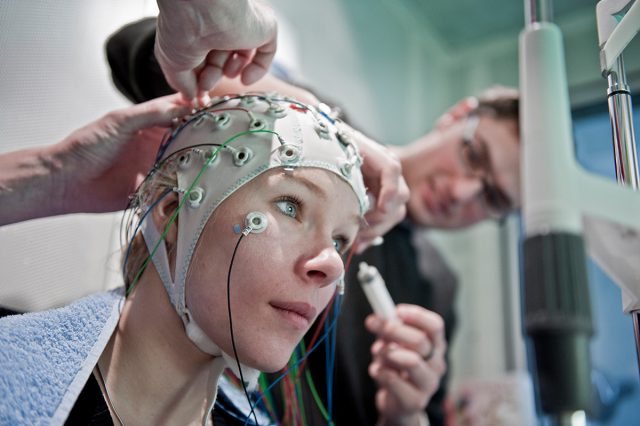The brain on prejudice
It is a crystalline description of how stubborn mental biases can be. Perhaps Albert Einstein, the alleged author, would have agreed with the proverb: “it is harder to crack a prejudice than an atom”. But ironically and paradoxically, it hides itself a bias behind. Einstein likely never said the sentence. Why so many people seemingly think so?
Biases are a frequent trap for the human mind. We stick to our world views and stereotypes at any price, either misusing or disregarding the most rationally appealing evidence. Prejudices are extraordinary rigid, so much that one might expect them to have a robust counterpart inside the brain. Is this the case? Are there dedicated mental processes for them, or a brain centre for bias?

Researchers at the Universities of Bern, Basel (Switzerland) and Freiburg (Germany) recently addressed1 these questions. They found that, despite the widespread prevalence of biases, there is nothing qualitatively different in how the brain processes typically biased beliefs – for example: what supporters of a football team think about the attributes of a competitor. When falling into biased judgements, the brain just takes more time on the same tasks. These findings were published on February in PNAS.
In a sense, prejudices and biases do not allow us to think clearly. We waste opportunities in novel situations that evoke past unpleasant memories. It is hard to learn something positive about what we are already convinced to know it is bad or alien. In this very way, it happens when football supporters do in a laboratory the Implicit Association Test.
Imagine a fictional subject in the experiment. Juan Pérez, 45, a supporter of Real Madrid CF since 1981, when his father gifted him a yearly membership for his 10th birthday. Juan seats at a computer, in front of a screen – showing one word at a time- and a minimal keyboard with just two buttons. Juan is requested to classify the words according to their valence and affiliation. When a word relates to his favourite football team or to something positive, he must press the left button. And the other button otherwise.
When “Cristiano”, “Bernabeu” or “happiness” appear on the display, Juan needs quite a short time (around 730 milliseconds) to press the corresponding button. Juan demonstrates with ease a robust ability to link positive ideas with in-group words. And the opposite association also holds true. His response is identically quick when the shown words relate negative attributes to his eternal contender. Nothing shocking, footballistically speaking.
But next, Juan is asked to switch the classification rule. For him, just hitting the same single button for “Cristiano” and “defeat” is such a mental torture only overcame by the harder epic of conceding the “love” attribute to “Messi”. Accordingly, Juan´s response now takes 850 milliseconds on average – 130 more than before- revealing a bias against making out-group/positive associations (compared to the “simpler” in-group/positive or out-group/negative).
That might be a law of the game, but scientists found in this effect –that happens in supporters from various football teams and political ideologies as well – a robust phenomenon and a great opportunity to explore the neuronal mechanisms underlying human mental biases.
Researchers used dozens of electroencephalogram (EEG) patches placed on subject´s heads to watch their brain microstates while they do the words classification task, so to reveal brain activity hubs patterns and their reciprocal interactions during biased judgements.
Researchers found the same sequence of brain microstates to happen when subjects classify, either positively or negatively, in-group and out-group words. Thus, the brain exhibits up to seven microstates during all given associations. In turn, each brain microstate underlines a specific stage during the task, from the early stimulus perception (seeing the word on the screen), then the making of judgement and finally the execution of a motor response (pressing one button or another). Overall, the activity patterns of the biased and unbiased brains are largely indistinguishable, found the researchers.
However, two of the seven brain microstates are slightly different during the out-group bias. In an earlier state, the brain gets stuck exhibiting a heightened caution that delays perceptual processing. The brain signatures of this state are a greater activation of the Lingual Gyrus and other visual related areas.
In a later state, activity hubs in the Middle Cingulate Cortex and the Posterior Parietal Cortex drive a greater cognitive load upon the motor decision being made, thus delaying task termination. Importantly, in both states, the differences are not qualitative. The neural signatures are identical. These states just lasted a bit longer.
What researchers found might, therefore, suggest that biases and prejudices have not any privileged place or status within the brain. Even despite the almost nuclear firmness of prejudices or if atoms are or not harder to crack.
References
- Schiller, B. et al (2016): Clocking the social mind by identifying mental processes in the IAT with electrical neuroimaging. PNAS. DOI: ↩
1 comment
[…] Sigue leyendo en Mapping Ignorance […]